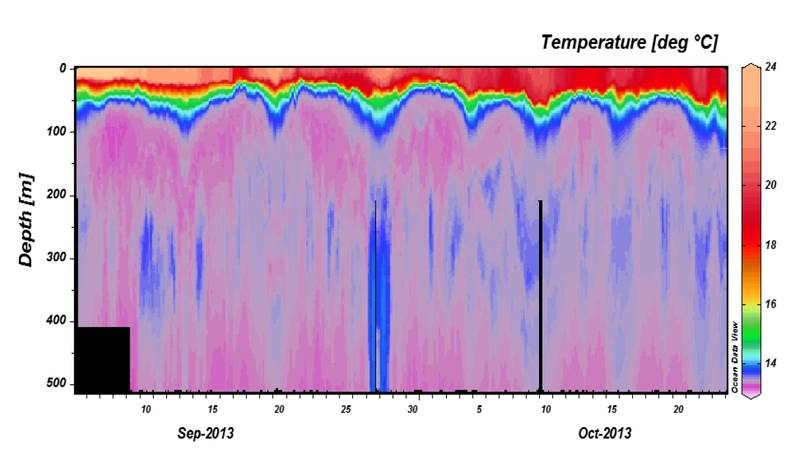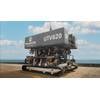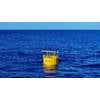SeaExplorer Underwater Glider Concludes Record Mission
ACSA announced that the SeaExplorer glider, developed by ACSA in partnership with ACRI, CNRS and IFREMER, successfully completed a two-month record mission in collaboration with the Laboratoire d’Océanographie de Villefranche (LOV) of National Center for Scientific Research (CNRS) and Pierre and Marie Curie University (UPMC).
“The mission objective was to evaluate the endurance of our first glider equipped with rechargeable batteries while performing several round trips between France and Corsica Island,” said Dr. Hervé Claustre of the CNRS LOV. Indeed, although all gliders on the market traditionally use alkaline or primary Lithium, ACSA is the first glider’s manufacturer to introduce rechargeable Li-Ion batteries as an effective, reliable and affordable solution for the market. “The SeaExplorer glider has also acquired a wealth of high resolution data along its transects whose results will be presented by LOV at the Ocean Science Meeting in Honolulu Hawaï in February 2014,” said Dr. Claustre. The LOV team is now planning in the coming weeks the next deployment of this new sensing platform with additional biogeochemical sensors (e.g. Chlorophyll fluorescence, backscattering).
Launched on September 5, 2013, LOV scientists recovered their glider on Tuesday, November 5 at 11:30 at Bay of Angels on the French Riviera. Completing a two-month mission, the SeaExplorer glider became the first glider to break a double world record for multi-sensors Unmanned Underwater Vehicle (UUV) with rechargeable batteries. A World Premiere.
Reaching the mythic milestone of 60 days and a total of 1,183 kilometers on a single battery charge, the SeaExplorer glider has successfully set a duration and distance record. Launched south of Nice, SeaExplorer averaged 0.5 knots and provided more than 1,168 profiles of the water column from near surface to 500 meters depth with 100% communications even in high sea states. Supervised by satellite telemetry from onshore office using ACSA’s IRIS software, the performance was manually stopped whereas internal parameters indicated 18% of its battery energy remaining.
The success of this world’s longest mission performed by a rechargeable powered UUV highlights the reliability of the SeaExplorer glider. Besides the platform’s endurance record, the scientific payload was equipped with SeaBird pumped CTD (Conductivity/Temperature/Depth) and Dissolved Oxygen sensors recording continuously at four seconds intersample time (metric resolution) for a total of 90 Mo. First comparisons of the SeaExplorer dataset with simultaneous profiles from a ship-borne CTD-rosette show very good data quality, even across strong temperature gradients.
On the other hand, this green technology also opens a new era for all scientists concerned about the environmental effectiveness of their activity. SeaExplorer becomes for scientists in charge of monitoring the climate change with glider, the lowest environmental impact thanks to replacement of batteries every 10 years.
From the French Operating Gliders Center (CNRS DT/INSU), Laurent Beguery, expert consultant for ACSA, said, “I am delighted with SeaExplorer performing eight weeks and setting this record. The performance of the endurance test is clearly a success. This means that this first rechargeable glider is now mature enough to represent a reliable alternative to alkaline and primary Lithium powered gliders. I personally do appreciate that this type of glider avoids operations of batteries replacement every two-four months and reduces, to 20 hours only, immobilization time for refueling at the workshop. In other words, for scientists, it makes lots of savings in materials replacement, technician man-hours as well as for ballasting time and … hopefully increases the Mean Time Between Failures (MTBF).”
Finally, since operating cost optimization concerns all fields including oceanographic research institutes, requiring less technicians to maintain a fleet definitively goes in the right direction. To understand the unique capability of rechargeable as a major step forward in the challenge to increase cost-effectiveness of gliders operations, Patrice PLA, Sales & Marketing Director commented, “Out of 10 months of at-sea operations per year, rechargeable batteries not only grant higher availability rate but also reduce operating costs between €75,000-150,000 per glider over five years compared to alkaline and primary Lithium technologies traditionally used by scientists.”
With this endurance record, scientists can access an affordable and sea-proven rechargeable glider with high performances to accomplish cost-effective missions up to two months.
oao.obs-vlfr.fr
dt.insu.cnrs.fr
acsa-alcen.com























 August 2025
August 2025



